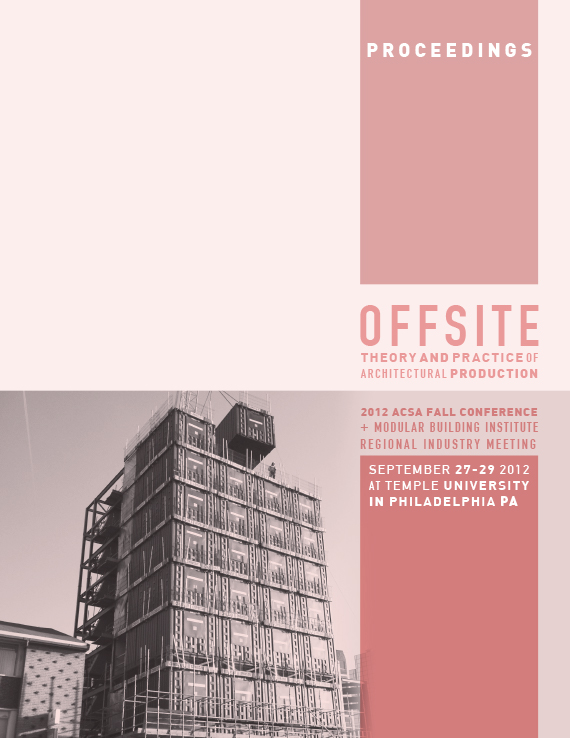Author(s): Damon Caldwell
The introduction of new materials and fabrication techniques into the designarena generally spurs a progressive, visionary tendency among designers,often manifesting as unique furniture and spaces of provocative form.The extent to which these items reflect and enhance the spirit of the prevailingculture can ultimately determine their long-term success and usein architecture. This paper therefore addresses the question of whethercontemporary digital fabrication can impart an optimistic spirit onto thelarger aesthetic and cultural principles of the constructed environment, usinga framework of parallel examination of mid-20th century and early 21stcentury design conditions as a basis for discussion of future directions ofmodern culture and design.Post-war design in America is presented as a case study in cultural optimism,reflected in the acceptance and mainstreaming of progressive design.A historical examination of furnishings, architecture, and contemporaneouswritings contributes understanding of the feedback loop of design to ethos,materiality to spirit. Examination of the work of mid-century furniture designerssuch as Verner Panton, Harry Bertoia, and Charles and Ray Eames,provides insight into the materials they helped introduce into the suburbanAmerican home. These items of daily living reinforced the modernist worldviewpresent in popular design writing of the day such as Mary and RusselWright’s Guide to Easier Living.The formal and material investigations which happened in the everydayhome established a springboard for architects of the time to build upon.The larger built works of Eero Saarinen, William Pereira, and Albert Freycan thus be seen as a proving ground for how smaller fabrications could be“scaled up” to lasting architectural constructions.Contemporary design has undergone a comparable transformation due tothe increased use of digital modeling and fabrication technologies. Expansiveuse of innovative materials and techniques of production have helpedloosen functionalist and traditionalist constraints. A corresponding resurgenceof progressive design and prefabrication possibilities have entered themainstream, as seen in the furnishings of Philip Stark and Karim Rashid,and the ubiquity of Dwell magazine. Digitally fabricated installations in (andon) museums abound, but it is the potential to alter the commonplace landscapethat has grown the least.Ultimately, an understanding of the formal morphologies of the fluid andlayered materials of the fifties can provide contemporary insight and newavenues for lasting architectural expression. Can we help the larger cultureembrace the future that design once promised, or will digital fabricationexist primarily as a niche playground for designers, sidelined from the mainstreamculture of the everyday built environment?Digital Innovation Session I
Volume Editors
John Quale, Rashida Ng & Ryan E. Smith
ISBN
978-0-935502-85-5

 Study Architecture
Study Architecture  ProPEL
ProPEL 
